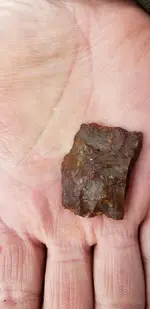unclemac
Gold Member
- Joined
- Oct 12, 2011
- Messages
- 7,432
- Reaction score
- 7,810
- Golden Thread
- 0
- Primary Interest:
- Beach & Shallow Water Hunting
Went SW WA this weekend and hooked up with the local archeologist for the area... he took us to a significant habitation spot (shell midden) that took up several acres. It was in conservancy so you couldn't take anything with you BUT artifacts and worked material were pretty easy to spot so it was all "catch and release". Fascination spot, on a hill top where EVERY rock, stone, pebble that you spotted had to have been transported there. Lots of simple oval, river polished quartz pebbles with no obvious use or function, lots of fire cracked rock, elk bones, fish bones, cockle, whelk and oyster shell everywhere, in deep deposits. All of this in a deep matrix of what has become black soil, which is of itself exotic as the underlaying ground is meters and meters of thick tsunami deposited sand. I was told that there are still tribal members that remember visiting the spot as children to pay respects to buried ancestors that had been interred there within family memory. And all of this for people that still live in the surrounding area but are not recognized as a distinct band and have no official tribal recognition. It is a "known" spot among folk that have that sort of awareness and respected as protected among them, it is also kind of hard to find but easy to get to. I posted one of the finds we put back, just sitting there poking out the shells and black earth.
Attachments
Upvote
0




